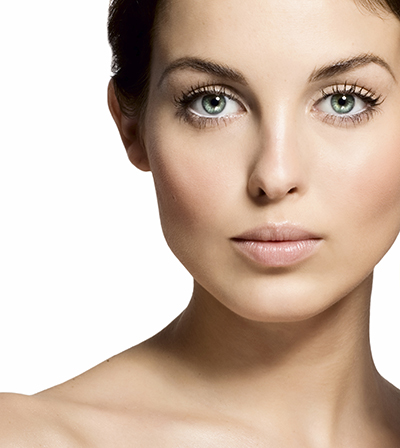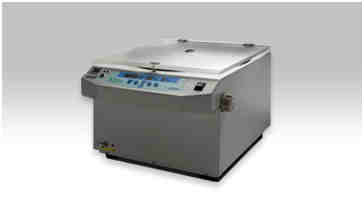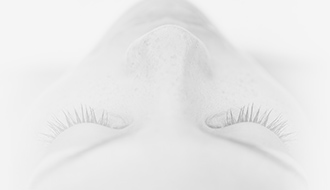Face Fat Transfer
Conveniently located to serve San Jose, CA
 Art of Face Sculpting with Your Own Fat.
Art of Face Sculpting with Your Own Fat.
Many people seeking a perkier, firmer backside use fat transfer to add volume and improve the texture of the faces, breasts, or buttocks. Other areas that can be treated with fat grafting include the hands, sternum, hips, biceps, triceps, and calves. Fat transfer can effectively diminish superficial scars by filling in the area surrounding the scar tissue and creating a smooth, firm surface.
Fat Transfer can be used to create a nicely rejuvenated face, in someone with loss of fat over the years from his/her face, or someone who has had a facelift and wants more plumpness in their face.
Recently, fat grafting has been shown to have added benefits, found in the injected fat, which not only provide volume, but also create skin improvement, wrinkle improvement, and other positive changes that are not explainable by volume alone.
A highly specialized procedure that takes years to perfect and master, Dr. Jane has been using Micro-Fat Grafting technique to rejuvenate and contour her patients since she learned the original technique from many doctors from Europe, South Korea, and US as well. Dr. Jane modified and created her own technique to provide long lasting, pleasing aesthetic results, and adapted the technique to contour the face, hands, breasts, and buttocks.
Adivive Fat Transfer
Face Fat Transfer with Adivive
- Art of Face Sculpting with Your Own Fat
- The Adivive Fat Transfer System – for More Predictable and Reproducible Results
 Autologous fat transfer isn’t new. But the Adivive™ Fat Transfer System’s approach to the procedure certainly is. That’s because the Adivive system uses a unique filtering mechanism and optimized centrifugation to yield a higher quality of adipose tissue for re-injection. The result? Higher graft volume survival and more predictable outcomes with less need to overfill as with traditional fat transfer techniques.
Autologous fat transfer isn’t new. But the Adivive™ Fat Transfer System’s approach to the procedure certainly is. That’s because the Adivive system uses a unique filtering mechanism and optimized centrifugation to yield a higher quality of adipose tissue for re-injection. The result? Higher graft volume survival and more predictable outcomes with less need to overfill as with traditional fat transfer techniques.
Fat Transfer can be used to create a nicely rejuvenated face in those with loss of fat over the years from his/her face, or someone who has had a facelift and wants more plumpness in their face.
Recently, fat grafting has been shown to have added benefits, found in the injected fat, which not only provides volume, but also improves skin, wrinkles, and results in other positive changes that are not explained by volume alone.
A highly specialized procedure that takes years to perfect and master, Dr. Jane has been using Micro-Fat Grafting technique to rejuvenate and contour the face, hands, breasts, and buttocks.
Fat Transfer can be used to create a nicely rejuvenated face, in those with loss of fat over the years from his/her face, or someone who has had a facelift and wants more plumpness in their face.
Recently, fat grafting has been shown to have added benefits, found in the injected fat, which not only provides volume, but also improves skin, wrinkles, and results in other positive changes that are not explainable by volume alone.
A highly specialized procedure that takes years to perfect and master, Dr. Jane has been using Micro-Fat Grafting technique to rejuvenate and contour the face, hands, breasts, and buttocks.
MAJOR BENEFITS
- To restore volume lost with aging
- To enhance the cheek bones or augment the cheeks
- To enhance the chin
- To add shape and frame the bone around the eyes which softens their appearance
- To raise the eyebrow
- To straighten the jaw line or hide the Jowl
- To shape the nose
- To add volume to the earlobes
- To fill the Naso-labial fold
- To augment the lips
- To repair scars
- To rejuvenate the skin
Before and After Pictures
Notice:
All pictures are of actual patients of our practice who have provided consent to display online. Viewers should understand that results do vary and not all individuals achieve the results depicted here. The following pages contain some nude images. By clinking on “View Images” below, you are acknowledging that you are over this legal age of 18 and are consenting to view these images.
Jensesis LipoPlasty & Laser provides treatments to patients throughout San Jose, San Francisco, Bay Area and out of town.
*Individual results may vary.
FREQUENTLY ASKED QUESTIONS
A. Microfat grafting can smooth certain deep wrinkles, enhance the volume of thinning lips or soft tissue of the cheek and chin, and can help the appearance of sunken eyelids. The main advantage of fat injection is that it is a 100% natural filler. The other advantage of fat is that there is usually an adequate supply of fat for areas requiring a large volume of augmentation.
A. The procedure is relatively simple and straightforward. A patient, who is deemed a good candidate for this procedure, is given antibiotics, and anesthetized in the operating room. The body is injected with tumescent solution to the donor area such as abdomen or thighs, where the fat is usually removed via a special technique. A specially-designed syringe is used to increase the survival rate of the fat cells and to keep as much of the fat cells alive as possible. Afterwards the fat is harvested using a small syringe, then prepared and placed in other small syringes for the injection. The fat is placed in very tiny amounts, mostly on the deep layer, next to the bone and inside of muscle layers. Special placement of micro sized-fat droplets at various layers also improves the percentage of fat survival. A small cannula is used so that small packets of fat are placed and they easily take on a new blood supply and survive. The popular treatment areas are the cheeks, smile lines, lips and the pre-jowl area.
A. Microfat grafting to small areas may be performed in the office under local anesthesia. For larger volumes of fat injection, we use mild sedation which involves a sedating medication which will make you very relaxed and sleepy during the procedure but does not require putting a breathing tube in your throat.
A. You are encouraged to resume normal activities as this decreases the amount of pain and increases the speed of your recovery. The areas of the face where fat was placed should be left alone unless you are instructed by Dr. Jane to massage the area. Massaging of the areas where the fat was harvested, particularly over the flanks, will speed the healing process. A Compression Garment may be needed for one to two weeks after surgery, depending on the degree of swelling.
A. Fat grafting is longer lasting than most other injectable fillers (such as Collagen, Restylane, Hylaform, and even Radiance). Because fat is a natural substance, there is typically less reaction to the injected fat by the body. The fat does however absorb over time and repeated injections may be necessary to maintain the desired fullness of the treated areas.
Micro Fat Grafting generally requires two to three treatments to achieve lasting results. Approximately 65 percent of the injected fat is absorbed back into your system during the first few months following the procedure. About 25-35 percent of the injected fat will remain in place. When patients notice the results fading, they can receive another fat transfer. After a few treatments, skin can maintain its firmer, smoother appearance for years.
A. Fat transfer procedure typically involves little or no downtime, though patients receiving sedation should not drive themselves home after the procedure. If you don’t need sedation medication, you can drive yourself.
A. Patients can typically return to work and other normal activities shortly within 2–7 days after the procedure depending on the areas treated.
A. No two individuals are the same, and results may vary. Some conditions can improve dramatically in some patients and not respond well in others. Overall, patients with severe volume loss can have satisfactory improvement with 1-3 fat grafts spaced 1-3 months apart.
A. Microfat grafting procedure may be used to enhance the results of another procedure, such as Active FX Laser Resurfacing, Exoderm nonsurgical facelift, chemical peels, eyelid surgeries, brow lifting, or Smartlipo liposculpting for double chin and thick neck.
A. Fat is harvested from areas with excess fat – typically the tummy, flanks, lateral or medial thigh – depending on the area the patient prefers, the volume of fat required, and the quality of the fat. The key is to avoid creating a defect in the donor area. A compression garment may be worn after harvesting but this is not always necessary.
A. For the right patient, fat grafting can be an extremely gratifying operation. The advantages are natural looking results, long-term enhancement, quick recovery period, and no scarring. This procedure takes about 1-3 hours, depending on where and how much fat grafting is going to occur.
A. At the Jane Aesthetics Surgery Center, we take pride in making sure we provide for our patients the best cosmetic surgical experience possible, anticipating problems or set-backs, and addressing them before they happen. This is a process that includes the pre-operative preparation, the actual surgery, and the after care.
A. The Adivive Fat Processing Unit is the most advance concentrated fat grafting system available. Not only is the system FDA-approved but it is the only totally self-contained unit that processes adult fat into a concentrated filler useful for both cosmetic and reconstructive application.
A. The Adivive Fat Processing Unit squeezes and filters harvested fat to provide a cleaner and more concentrated fat of extraordinary quality. The resulting fat graft contains a higher concentration of cytokines and other growth factors which enhances the long term persistence of the Adivive fat. Also, larger volumes may be safely used. As a result, more dramatic and predictable results occur with an average take in-excess of 50% of the transferred Adivive fat.
A. The two most commonly treated areas are the face and breasts, hands, buttocks and areas of the body with deficiency resulting from trauma or previous surgery.
A. The most common donor sites for large volume fat harvesting has been the abdomen and thighs as these donor sites are simultaneously treated with the Vaser Lipo platform.
A. Adivive for breast enhancing has been most useful for smaller volume grafting (100-150cc per breast). Better results are seen in patients requiring perhaps half to one cup size enlargements – such as lumpectomy/irradiation patients, breast lift patients and for cosmetic patients with moderate asymmetry of the breasts. Even after breasts implant surgeries, has Adivive fat grafting can be used to finalize symmetry and to enhance natural appearance.
A. For both breast reconstruction and cosmetic breast procedures, Dr. Jane generally utilizes 150 cc to 350 cc of fat. This may require removal of 500 cc or more of fat from the donor site. In order to avoid contour irregularities of the donor site, Vaser Lipo is almost always used to treat these areas. The only exception to this rule is if the same area will be revisited for future fat harvesting. Therefore, the total time for treating the breasts and donor sites is approximately 2 to 3 hours.
A. Visual results, especially in the face, are immediate. There is of course some bruising and swelling which resolves in seven to 10 days. Optimal results are seen at different intervals depending on the areas treated and patient variability. Three months seems to be the magic number for both optimal results and prediction of viability of the grafted fat. According to Drs. He Young Lee (Seoul, Korea) and Kotaro Yoshimura (Tokyo), “What you see, in terms of persistence, at three months, we should see long term. That has been my experience during the almost 30 years I have utilized fat as a graft.”
A. A Face Fat Transfer is a minimally invasive procedure that can take years off your appearance. In addition to becoming lax and droopy, our facial features also undergo significant volume depletion and loss, as we age. Face Fat Transfers can help women and men achieve a youthful appearance by lifting sagging tissue and filling in deflated facial regions. Facial Fat Transfers can also fill in wrinkles, lines, and other depressions.
A.
- Correction of “hollow” eyes: visible blood vessels under the eyes, and visible tear troughs
- Correction after removal of under-eye pads (from a lower blepharoplasty)
- The temple area
- Upper, sub, and lower malar (cheek bone)
- Chin
- Lips
- Jaw line
- Forehead
- Glabella (in between the eye brows)
- Facial scars
- The area between upper lip and nose
- The bridge of the nose and its lateral fatty pads
A. A Facial Fat Transfer takes approximately 1-3 hours, depending on the amount of fat necessary for the procedure. After you have had time to recover from the anesthesia, you will be allowed to go home and rest.
A. Face Fat Transfers have minimal risks, the greatest of which includes bruising and swelling. Since it is your body’s own tissue, there is no risk of allergic reaction or rejection. While uncommon, other complications can include reaction to the anesthetic, bleeding, scarring, or permanent discoloration.
A. Dr. Jane uses the most advanced fat transfer techniques. Her Facial Fat Transfers do not require any incisions that will leave noticeable scars.
A. The fat for your procedure can be harvested from several locations on your body, for example the abdomen, thighs, or lower back. Once the fat has been harvested, it is then purified and prepared for injection into the target area.
A. Fat is injected in very small amounts, with a small bore syringe, into the pre-decided target area. This allows the fat to incorporate with the body’s own tissue.
A. Dr. Jane performs Face Fat Transfer in the state-of-the-art surgical outpatient facility at Jenesis and you do not have to go to other hospital and do not have to pay for extra facility fee.
A. A Face Fat Transfer is performed with both local anesthesia and oral sedation. The procedure has very little discomfort, both during and after the injections
A. Usually the recovery from a Face Fat Transfer is very minimal and will last only one or two days. There may be some redness, swelling, and minor discomfort for the first 24-72 hours. Patients are generally able to return to work the following day; they may resume exercise and strenuous activities within one to four weeks, depending on the extent of their procedure.
A. You will see results immediately after a Face Fat Transfer, but you will continue to see gradual improvement over the next year, as swelling diminishes and the tissue continues to generate. Patients note not only an improvement in facial fullness but also in the quality of their skin’s appearance, as well.
A. The results from a Face Fat Transfer are usually permanent. The fat is composed of natural, living cells, so it is easily accepted by your body, not rejected or absorbed. After a Facial Fat Transfer, the tissue establishes a new blood supply and therefore becomes a permanent part of your body.
A. Dr. Jane is exceptionally skilled at removing and transferring just the right amount of live, fatty tissue. Rarely does not enough of the fat tissue survive to provide optimum results, but if this should happen, another procedure may be required.
A. Face Fat Transfers are not generally covered by insurance. To assist with costs, Jenesis takes a variety of payment methods such as cash, money order, and all major credit cards. We are also happy to offer 12 month, interest free financing for your procedures through Care Credit.
A. To be a good candidate for a Facial Fat Transfer, you need to be in overall good health, with no active disease or pre-existing conditions, and have realistic expectations of the surgical experience.





